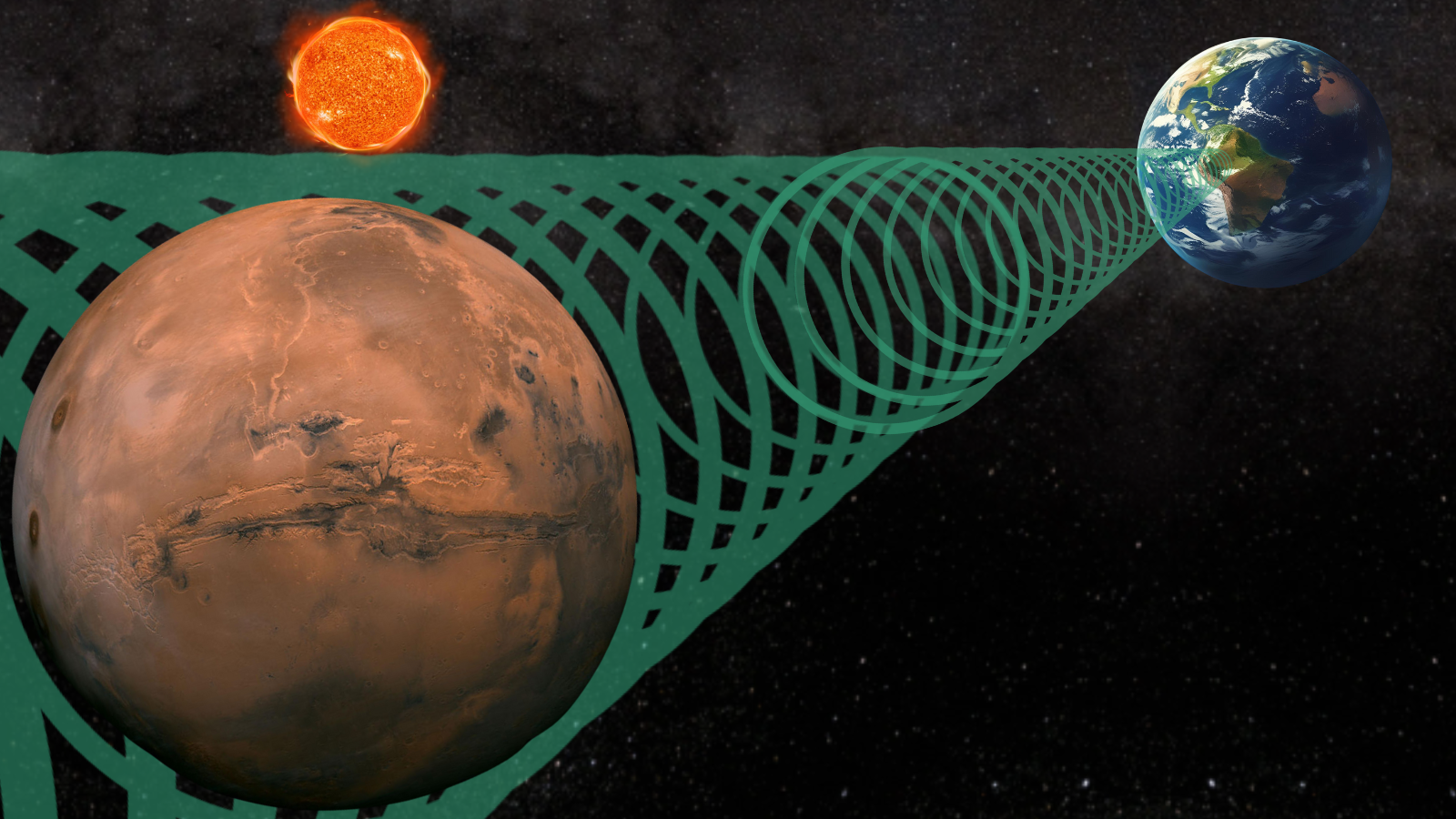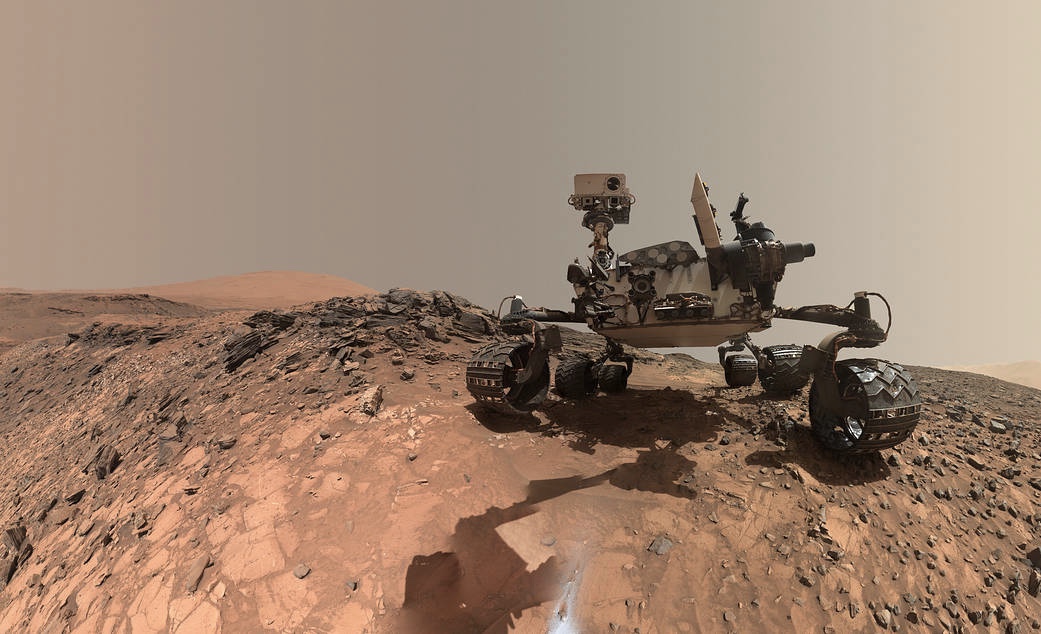If aliens explore space like humans do, NASA scientists know where to look for their signals
"Considering the direction and frequency of our most common signals gives insights into where we should be looking to improve our chances of detecting alien technosignatures."

Scientists have taken a close look at our activity within the solar system to determine where to look for signals from intelligent alien life. The findings apply if those extraterrestrials explore their own cosmic backyards in a way similar to us.
A team from NASA's Jet Propulsion Laboratory (JPL) and Penn State University looked at when and where human transmissions would be most detectable by intelligent life outside the solar system. This helped to build patterns that could be employed by SETI in its hunt for signs of intelligent life or "technosignatures" beyond the solar system.
"Humans are predominantly communicating with the spacecraft and probes we have sent to study other planets like Mars," team leader and Penn State Eberly College of Science researcher said in a statement. "But a planet like Mars does not block the entire transmission, so a distant spacecraft or planet positioned along the path of these interplanetary communications could potentially detect the spillover; that would occur when Earth and another solar system planet align from their perspective. This suggests that we should look for alignment of planets outside of our solar system when searching for extraterrestrial communications."
To reach their conclusion, Fan and colleagues looked at data logs from NASA's Deep Space Network (DSN), a relay system that enables two-way communication with spacecraft and planetary rovers. The team focused on transmissions to deep space instruments like interplanetary spacecraft and space-based telescopes rather than transmissions to equipment in orbit around Earth, like satellites and low-Earth orbit spacecraft. This is because the latter type of signal is low-power and unlikely to be detected at vast distances.
The researchers chose the DSN from a range of alternative deep-space networks because this NASA-operated relay has led more space missions than any other to date. That makes it the ideal representation of communications between Earth and deep space.
"NASA's Deep Space Network provides the crucial link between Earth and its interplanetary missions like the New Horizons spacecraft, which is now outbound from the solar system, and the James Webb Space Telescope (JWST)," team member and JPL scientist Joseph Lazio said. "It sends some of humanity's strongest and most persistent radio signals into space, and the public logs of its transmissions allowed our team to establish the temporal and spatial patterns of those transmissions for the past 20 years."
By comparing DSN logs with spacecraft locations, the team was able to determine the direction of human transmissions to this equipment and the timing of such communications. They found that deep-space radio signals were predominantly directed toward spacecraft near Mars, with common transmissions directed toward the other planets of the solar system.
Breaking space news, the latest updates on rocket launches, skywatching events and more!
There were also a great deal of transmissions toward the gravitationally stable points between Earth and the sun known as Lagrange points. That is because these are the ideal locations around our planet for space telescopes like the JWST.

"Based on data from the last 20 years, we found that if an extraterrestrial intelligence were in a location that could observe the alignment of Earth and Mars, there's a 77% chance that they would be in the path of one of our transmissions — orders of magnitude more likely than being in a random position at a random time," Fan said. "If they could view an alignment with another solar-system planet, there is a 12% chance they would be in the path of our transmissions.
"When not observing a planet alignment, however, these chances are minuscule."
Alien signals could be found where the planets allign
These findings give astronomers a hint at where and when to look for technosignatures; the periods during which extrasolar planets, or "exoplanets," in other star systems align with their stars are of particular interest.
Alignments between exoplanets and stars, called transits, that occur when these worlds cross the face of their parent star from our perspective on Earth, are particularly useful for detecting planets beyond the solar system.
"However, because we are only starting to detect a lot of exoplanets in the last decade or two, we do not know many systems with two or more transiting exoplanets," Fan said. "With the upcoming launch of NASA's Nancy Grace Roman Space Telescope, we expect to detect a hundred thousand previously undetected exoplanets, so our potential search area should increase greatly."
The team found that because the planets are mostly on the same orbital plane, signals passing through the DNS tend to be oriented within around 5 degrees of Earth's orbital plane rather than travelling out at an extreme angle. They also found that the average signal passing through this NASA relay could be detectable at a distance of up to 23 light-years away, assuming extraterrestrial life with telescope technology similar to ours.
In combination, these factors indicate that the search for technosignatures should focus on planetary systems that are edge-to-edge with the solar system in terms of orientation (think two plates sat on a flat surface), and are no more than 23 light-years away.
The next step for the team is to begin identifying planetary systems that fit these criteria.
While the team's research predominantly focuses on radio transmissions, the model could also apply to laser transmissions like the laser communication system currently being tested by NASA. Laser transmissions are, however, less likely to "leak" past their intended targets than radio signals.
"Humans are pretty early in our spacefaring journey, and as we reach further into our solar system, our transmissions to other planets will only increase," team member Jason Wright, director of the Penn State Extraterrestrial Intelligence Center, said. "Using our own deep space communications as a baseline, we quantified how future searchers for extraterrestrial intelligence could be improved by focusing on systems with particular orientations and planet alignments."
The team's research was published on Thursday (Aug. 21) in The Astrophysical Journal Letters.

Robert Lea is a science journalist in the U.K. whose articles have been published in Physics World, New Scientist, Astronomy Magazine, All About Space, Newsweek and ZME Science. He also writes about science communication for Elsevier and the European Journal of Physics. Rob holds a bachelor of science degree in physics and astronomy from the U.K.’s Open University. Follow him on Twitter @sciencef1rst.
You must confirm your public display name before commenting
Please logout and then login again, you will then be prompted to enter your display name.
